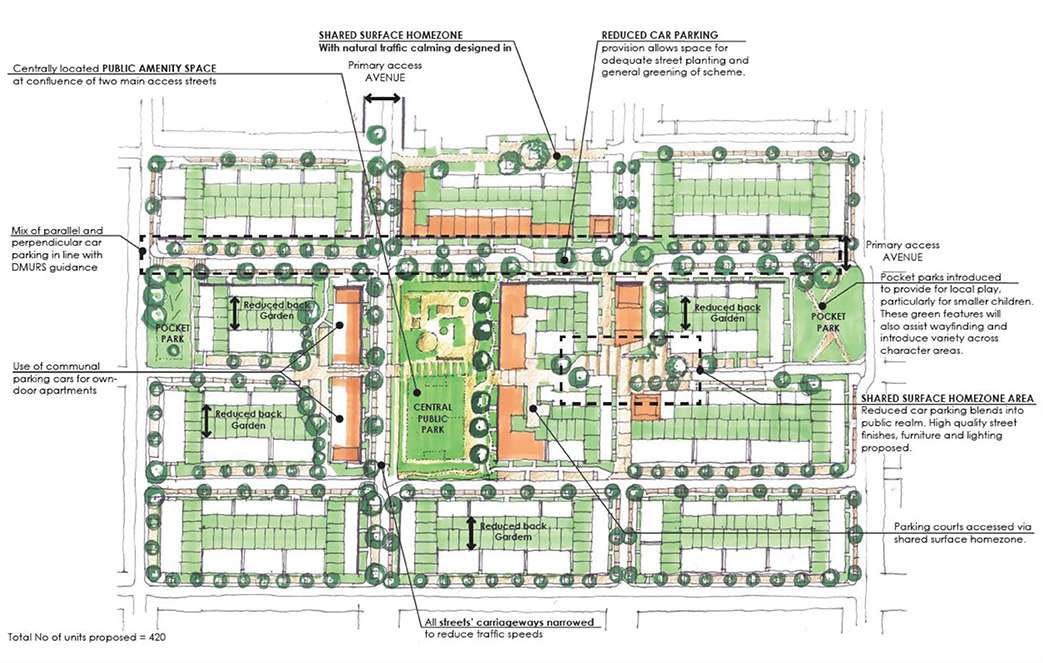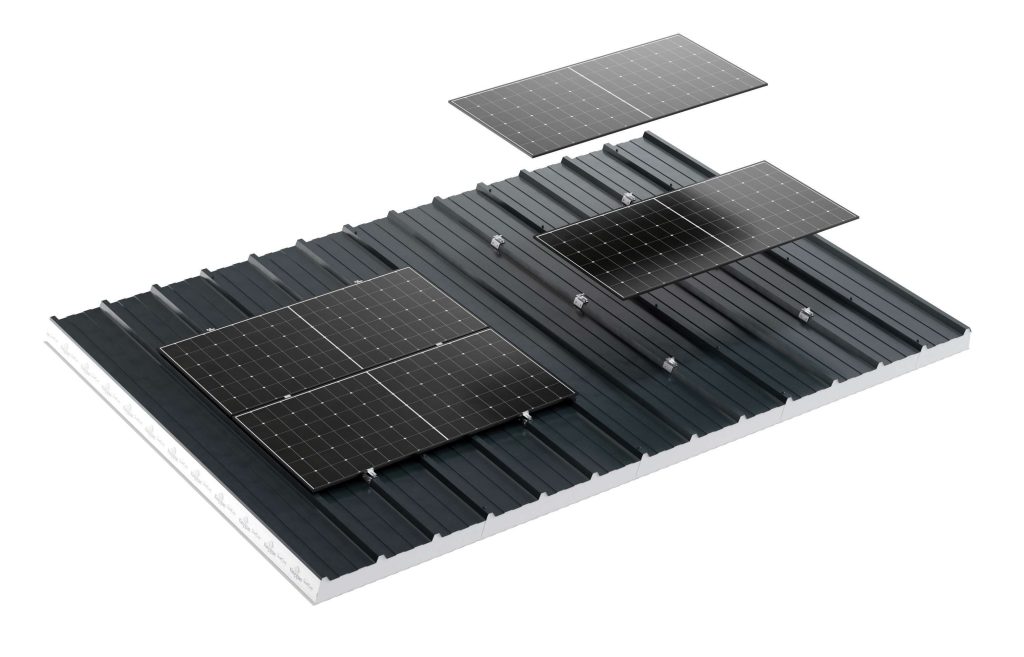
NEW THINKING IN HOUSING
New research from the RIAI has identified a new “Low Rise Medium Density Housing” model capable of more than doubling own door dwellings per hectare
The Royal Institute of the Architects of Ireland (RIAI) has written to Housing Minister Darragh O’Brien proposing that a new Low-Rise Medium-Density Housing model should be introduced as a priority as part of a new Ministerial Directive for National Housing Planning Standards.

RIAI President, Charlotte Sheridan, said: “Despite the progress which is being made on housing supply, we believe the Government should be open to new thinking and new initiatives which will help address the current chronic housing shortage. Throughout Europe, there are many examples of exceptional high quality low-rise medium density housing developments but virtually none here in Ireland. That can be changed by Ministerial Directive and in doing so we can unlock the potential to deliver twice as many homes on the same locations.”
The RIAI submission explains that currently, it is extremely difficult to achieve housing density above 30 units per hectare in Ireland. Low-rise medium-density housing is a category of housing, providing typical densities of 35-80 dwellings per hectare. It exists in most European countries including Sweden, Denmark, Finland, Netherlands, Germany, in Australia and New Zealand.
If implemented, this new model would allow for the delivery of housing that would more closely resemble popular residential areas like Phibsborough, Portobello, Ranelagh in Dublin and Turners Cross in Cork. All of these areas were developed before the current guidelines, which date back over one hundred years, were introduced. These widely used guidelines have resulted in recommended densities of 30 units per hectare in urban areas and still inform local development plans. The model would also allow for the creation of places that provide high quality homes building on existing infrastructure by incorporating new housing types.

Crucially, the low-rise medium-density housing model would incorporate an increase in public open space. To achieve this new form of housing it is essential that good design of the homes and public spaces are mandatory and deliver high quality urban design of streets, squares and parks. The RIAI also believes that making the model mandatory would reduce construction complexity and cost. This would promote the development of smaller schemes accessible to more small–to medium contractors and may be funded, constructed and sold incrementally.
Charlotte Sheridan concluded: “This new housing category will enable architects, urban designers and their clients in the public and private sector to produce a new generation of high-quality sustainable residential communities for the 21st century. It will also significantly increase output, raise standards and improve the choice of housing and quality of the public realm in residential neighbourhoods.”

Irish Housing – current issues and barriers to innovation
• Lack of adoption of innovative models of housing due to regulatory constraints.
• Adherence to historic planning principles resulting from the Tudor Walters report.
• The current formula, whilst achieving the required density, does not generally produce the high standards of sustainable residential communities to which architects, urban designers and the general public aspires. There is a difficulty in achieving housing solutions above 30 units per hectare.
• The current market centres on high-rise, high-cost build-to-rent schemes and the release of accommodation depends on the completion of full schemes.
• The result is low density enclaves of houses and high density enclaves of apartments, as opposed to sustainable integrated neighborhoods and communities.
• Lack of flexibility in the interpretation of Development Plan guidelines by Local Authorities, which impedes implementation innovative housing solutions.
• Local Authorities Housing Supply Targets do meet housing supply requirements, which inhibits planning permission applications within current development plan cycles.
Benefits – high quality low rise medium density housing
• Guarantees high-quality streets, squares and parks, bringing parallel improvements in the quality of the public realm, improving local connections and integrated nature based solutions.
• Easily integrated into existing neighbourhoods, that is positive for both existing communities and new households.
• Provides for more diversity in housing models and choice.
• Encourages sustainable compact settlement
• Facilitates incremental growth and early delivery, reducing risk and costs.
• Encourages a standardised traditional form of construction.
• Facilitates faster construction through the incorporation of prefabrication systems MMC.
• Reduction in construction complexity and cost that promotes the development of smaller schemes accessible to more small–to-medium contractors.
• Facilitate growth in small-to-medium developers and contractors creating a pipeline of projects.
• Reduced cost and risk will increase viability and grow confidence in national funding vehicles.
• Immediate positive impact in addressing the current housing crisis.
____________________________________________________________________________
Denise Maguire Editor of Irish Construction Industry Magazine & Plan Magazine




